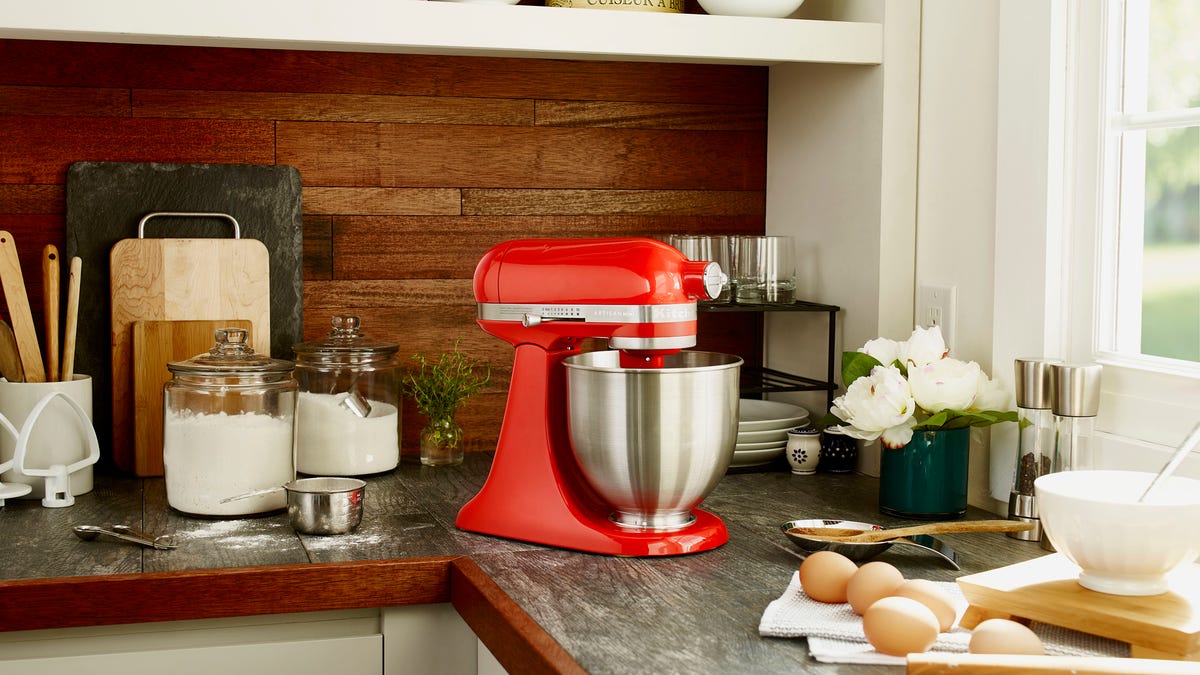5 ways you're using your stand mixer wrong
You're probably not using your stand mixer correctly. Here's how to change that.

No appliance in the kitchen can make a home cook feel more professional than a stand mixer. No matter if you have a KitchenAid or a Kenmore, the controls may seem simple enough but you may be making some common mistakes.
Your attachment is too low
The adjustment screw is located near the head hinge.
Chances are, you've probably never changed the attachment height on your mixer. That's OK, as long as the attachment doesn't touch the bottom of your mixing bowl. Manufacturers set it to the perfect height, but over time it can jiggle and reposition.
You never want the attachment to touch the bottom of the bowl because the friction can damage your bowl and put extra strain on the mixer's motor.
If your attachments are rubbing against the bowl you may see some wear on the bottom of the attachment or you may see small circular scratches on the bottom of your bowl.
To change the height of your attachment:
- Unlock the mixer head and raise it up.
- Unplug the mixer and remove the attachment.
- Find the adjustment screw. There should be one screw located right behind the mixing bowl on the neck of the mixer that connects the head to the base. Depending on the type of mixer, the screw will be in the hinge or by the hinge that allows the head to raise and lower.
- Turn the screw counterclockwise a half-turn to raise the attachment height.
Put the attachment back on and test if it is still touching your bowl. If so, turn the screw another half-turn.
Sometimes it's hard to tell if the head is at the right height. Kitchen Aid suggests putting a dime in the bowl and turning the mixer on low. If the beater attachment pushes the dime around the bowl, the attachment is too low. If dime doesn't move, the attachment height is too high. When the attachment height is just right, the dime will only move a little.
Your attachment is too high
If you have the opposite problem and the attachment doesn't seem to reach the ingredients on the bottom of the bowl, you'll need to lower your attachment height. Follow the directions above, but instead of turning the screw counterclockwise, turn it clockwise for a half-turn. Just be sure the attachments don't touch the bottom of the bowl.
You're starting too fast
If your kitchen gets splattered with batter every time you use your mixer, the problem is probably your speed. Always start off on the lowest speed and gradually move up to the speed suggested in your recipe.
If you still find that your mixer splashes, cover it with a dishtowel to reduce mess.
You're not using the right beater
The metal or coated beater that comes with your mixer is just fine, but for the best results, upgrade to a silicone scraper blade. This is a beater that scrapes the edges of the bowl so you don't need to stop the mixer and do it yourself.
You don't clean your mixer properly
Batter, flour and other cooking goo can get lodged in the working parts of your mixer. A buildup can make your mixer work harder or can gum up some of the mechanisms. Here is a guide on cleaning your stand mixer from top to bottom.
Editors' note: This article was originally published on Sept. 14, 2016 and has been updated.

